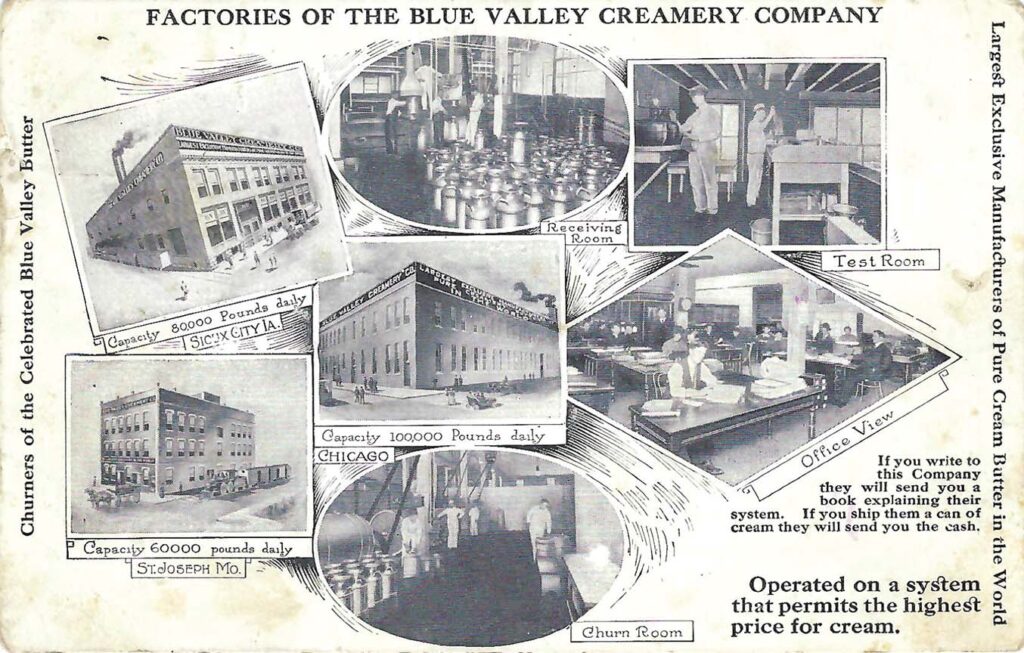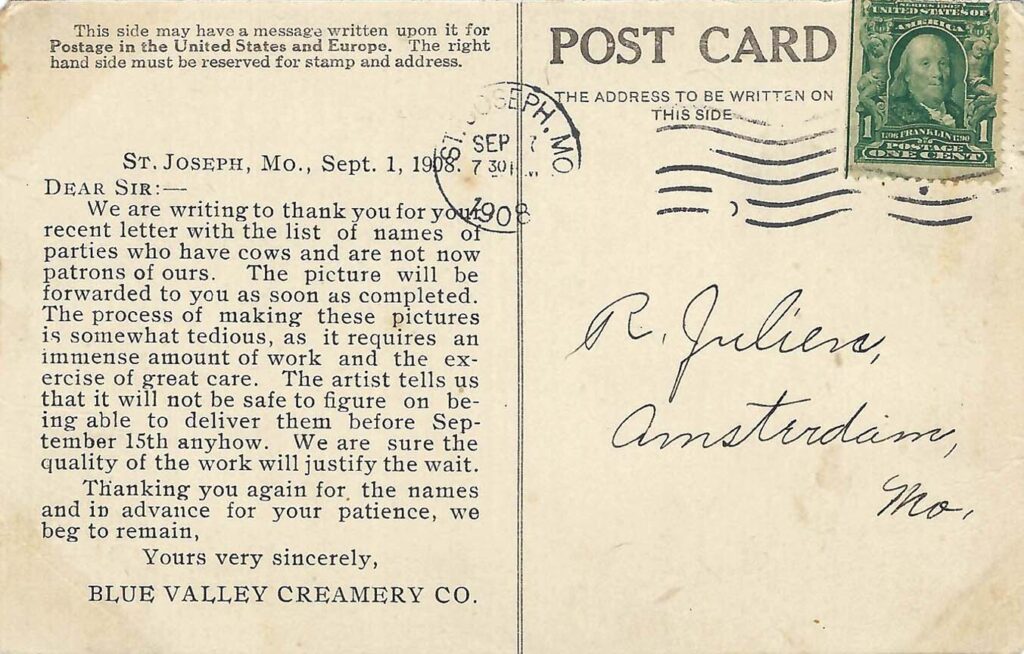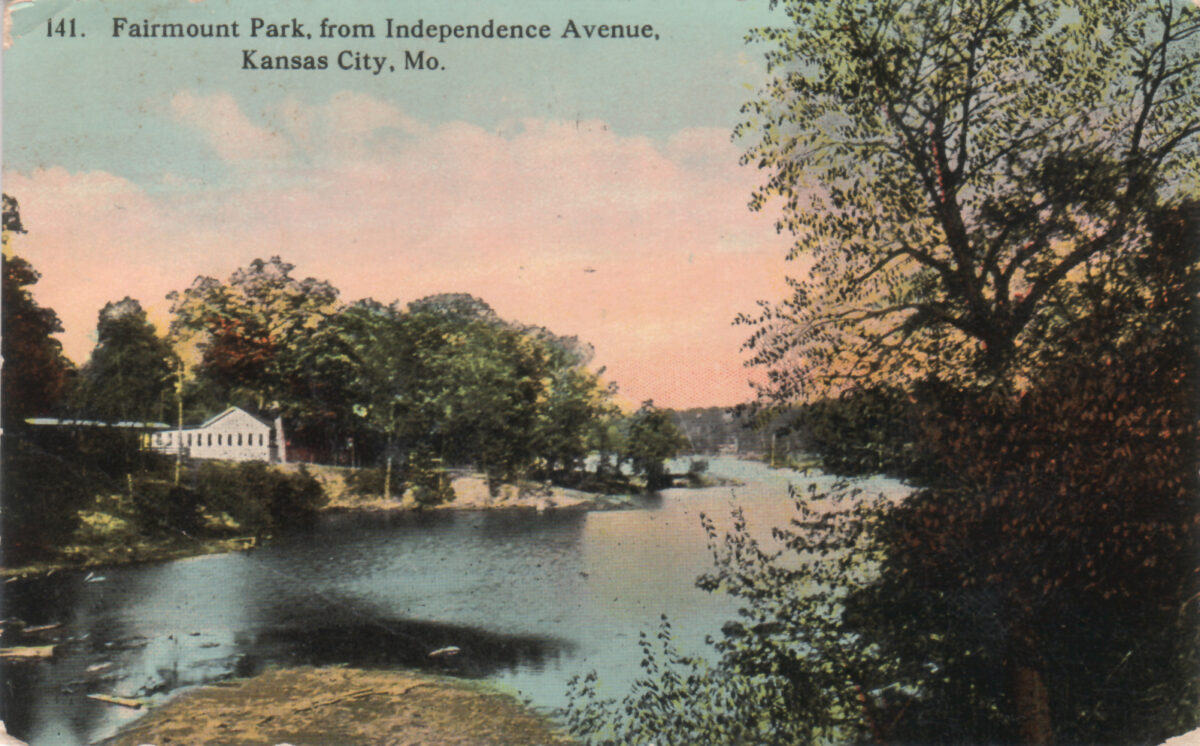
Michael Bushnell
Publisher
This week, we offer this advertising postcard from the Blue Valley Creamery Company, spotlighting three of the company’s facilities in Sioux City, Iowa; St. Joseph, Mo.; and Chicago.
“Churners of the celebrated Blue Valley Butter” is noted on the front of the postcard. The Blue Valley Creamery Co. had twenty one large butter making plants in the United States and was noted for paying the highest price for cream. The views on the front of the card show three of the company’s factories as well as various views inside the plants, such as the Test Room, the Churn Room and a general office view
Blue Valley Creamery was founded in St. Joseph, Mo., in 1899 by Huston Wyeth and James A Walker. Wyeth, whose father founded the Wyeth Hardware Company as well as the Artesian Ice company years before, built up the business to be one of the largest cream producing operations in the country by 1917. By 1920, the company headquarters had moved to Chicago and plants were located in almost 30 Midwestern cities.
The Kansas City plant was located at 501-503 W. 25th Street, just to the west of where Studio Dan Meiners is today.
According to historical documents, the Creamery’s Sioux City plant produced the best butter of all the plants in the system. The Sioux City location had a regular staff of 35 people, which was increased to 60 or more during the busy spring and summer season. Blue Valley was also one of the innovators of selling butter in one-pound packages in the early 1900s.
Prior to 1900, due to limitations in transportation and storage, creameries such as Blue Valley were primarily local operations, buying cream from family-run, local dairy farms, supplying farmers with shipping tags that were attached to the producer’s milk or cream cans. The tag guaranteed shipping of the full can to the creamery as well as return shipping back to the originating dairy farm.
Modernization in the railroad network and cold storage facilities combined with newer, cream separating techniques allowed creameries to serve a larger geographical area. Dairy processing plants often dispatched trucks to area farms that transported full cans to a nearby rail depot or back to the creamery directly for processing.
In 1939 Blue Valley Creamery was acquired by the Beatrice Creamery of Chicago and survives today under the ConAgra umbrella of companies, although I think we’d be hard-pressed to recognize Mr. Wyeth’s original operation given today’s vast modernization and corporate structures.
The advertising message typed on the back of the card is dated Sept. 1, 1908 and relates to a promotion where anyone who refers new cream vendors to the creamery would receive a commissioned piece of artwork. The ad copy reads: “Dear Sir, we are writing you to thank you for your recent letter with the list of names of parties who have cows and are not now patrons of ours. The picture will be forwarded to you as soon as completed. The process of making these pictures is somewhat tedious, as it requires an immense amount of work and the exercise of great care. The artist tells us that it will not be safe to figure on being able to deliver them before September 15th anyhow. We are sure the quality of the work will justify the wait. Thanking you again for the names and in advance for your patience, we beg to remain, Yours very sincerely, Blue Valley Creamery Co.”
The card was sent from St. Joseph, Mo. on September 7, 1908 to R. Julien of Amsterdam, Mo.
Source citation: 1940 Tax Assessment Photo and Sanborn Fire Insurance Map images are courtesy of the Kansas City Public Library, Missouri Valley Special Collections.


















